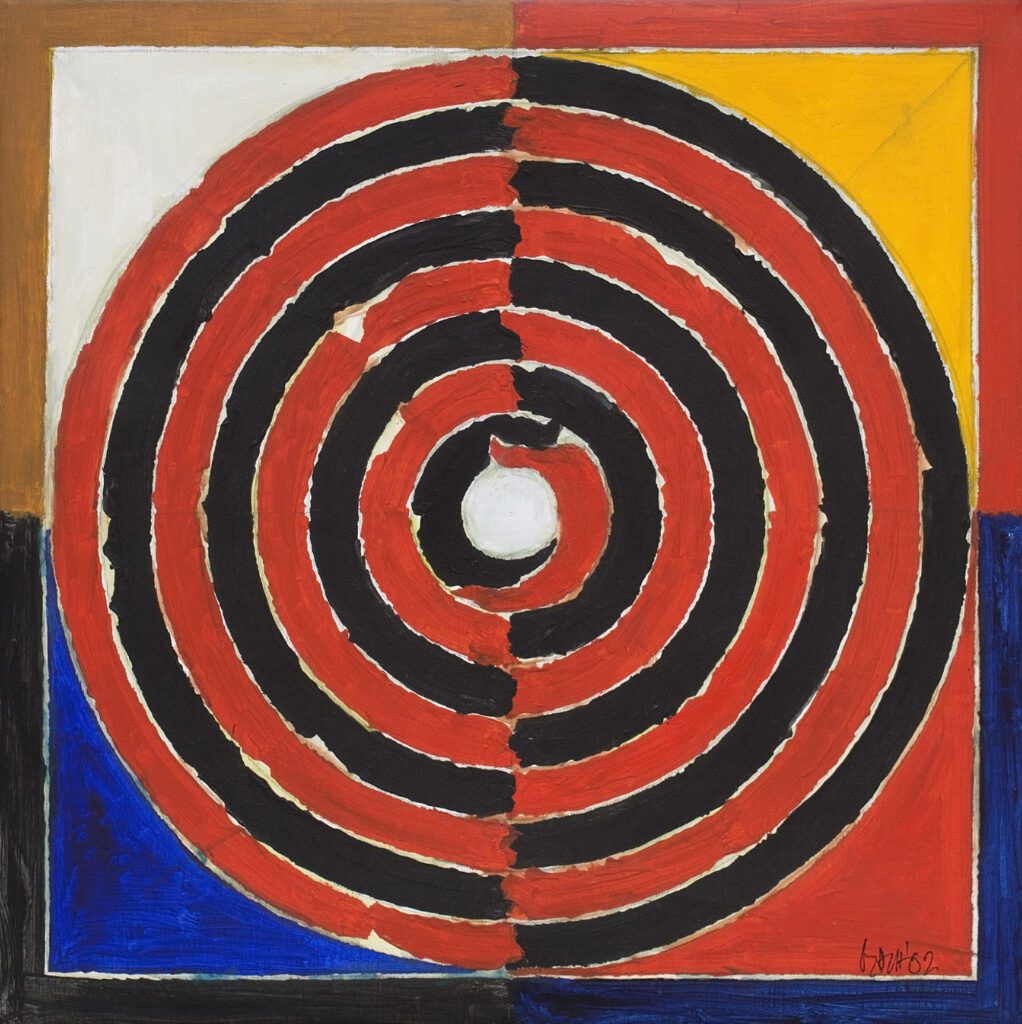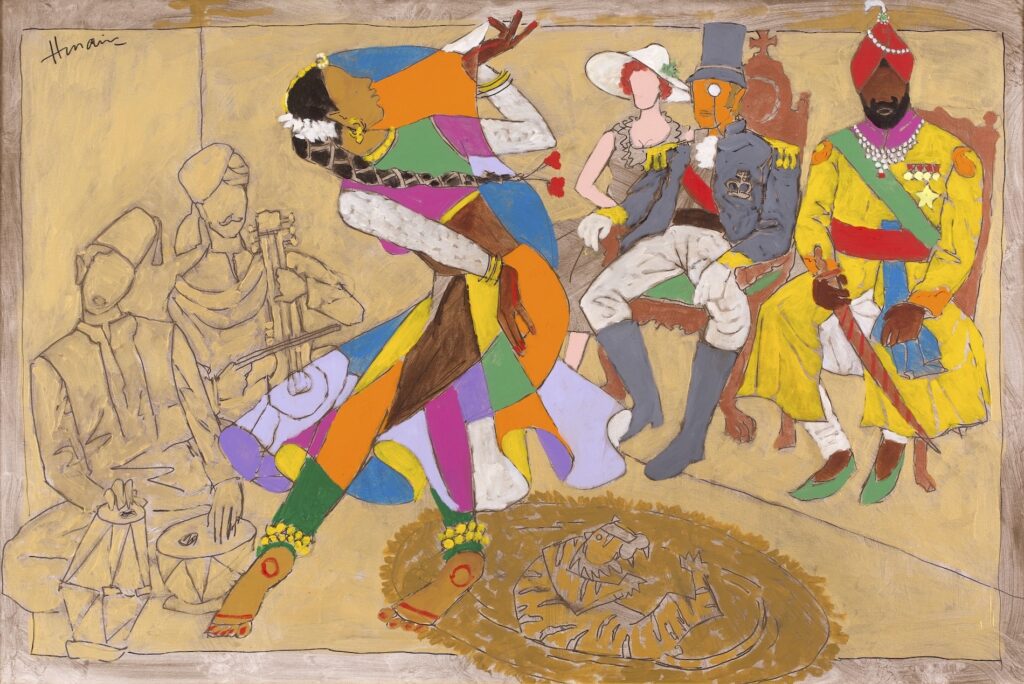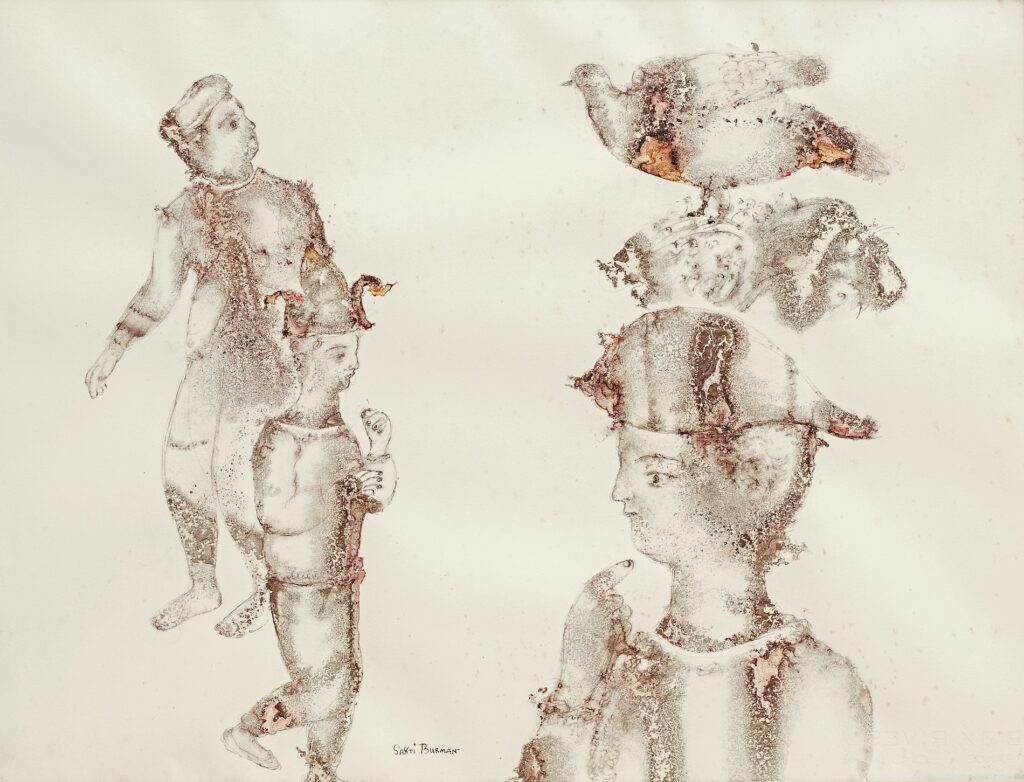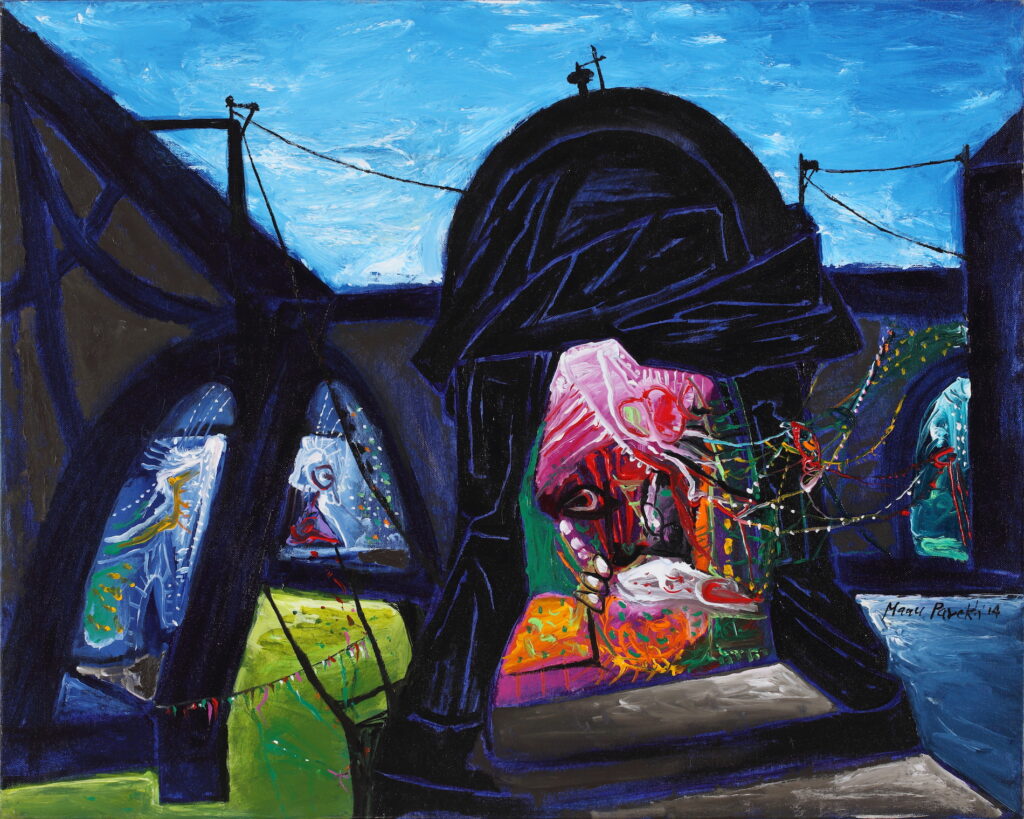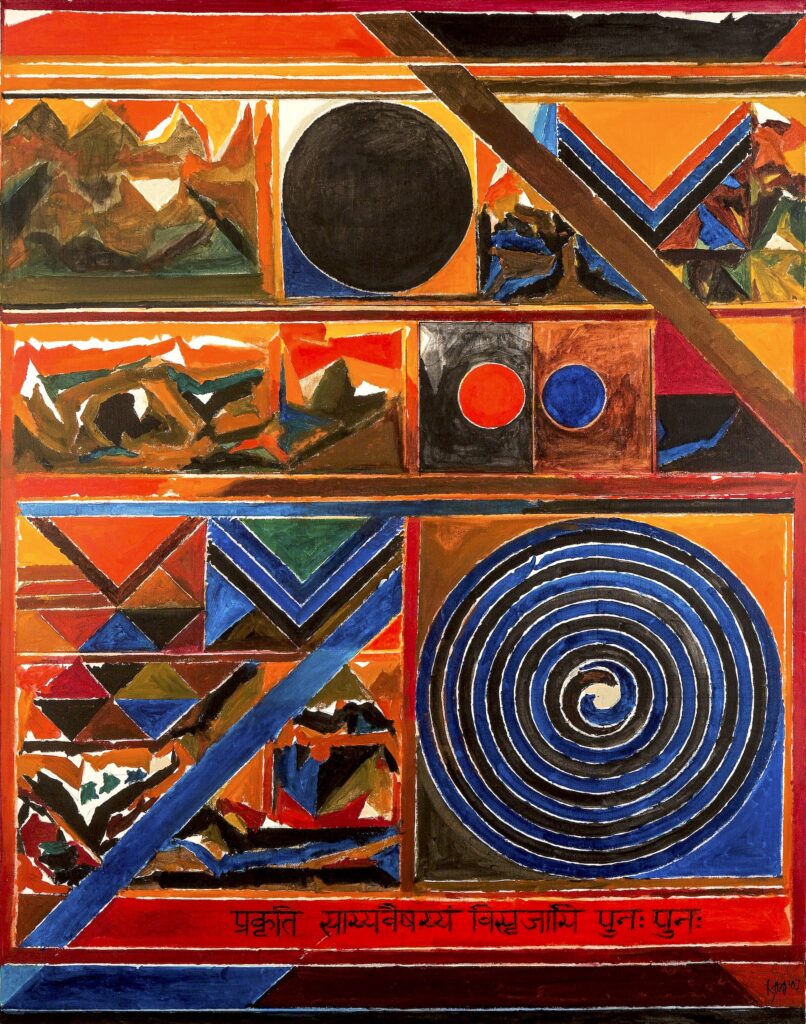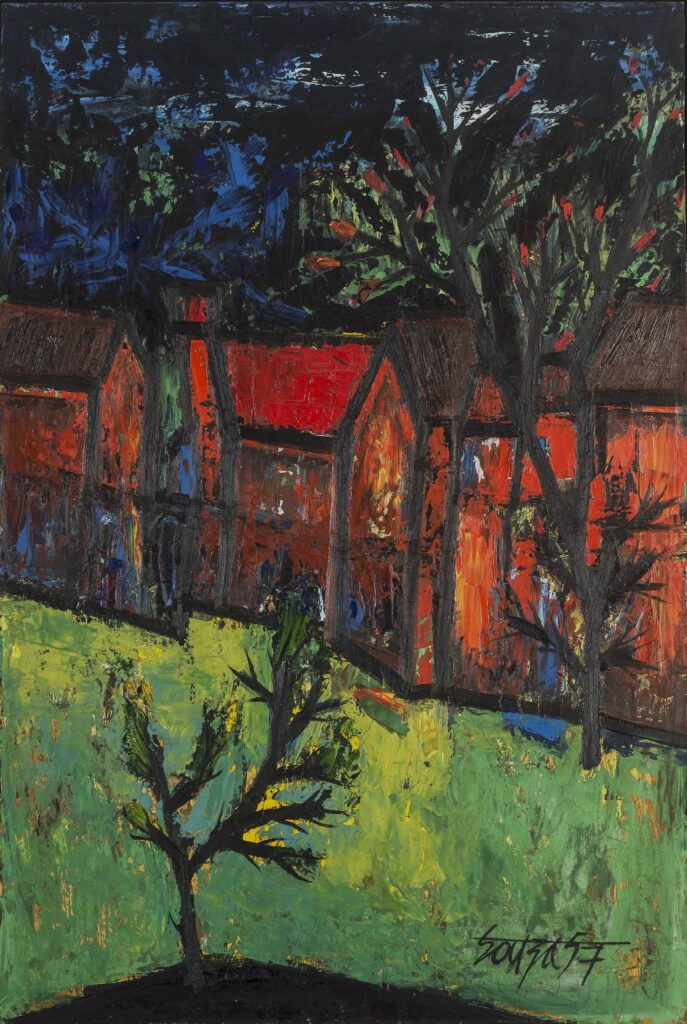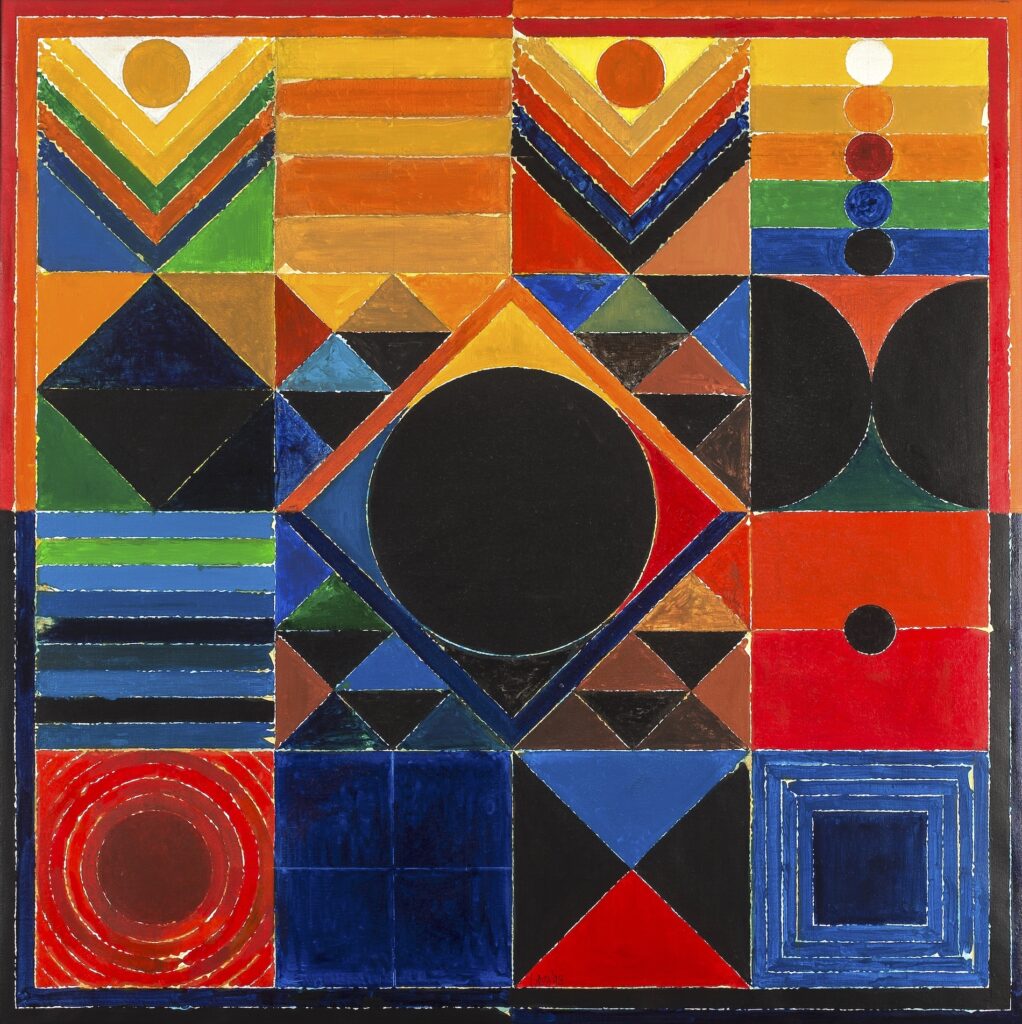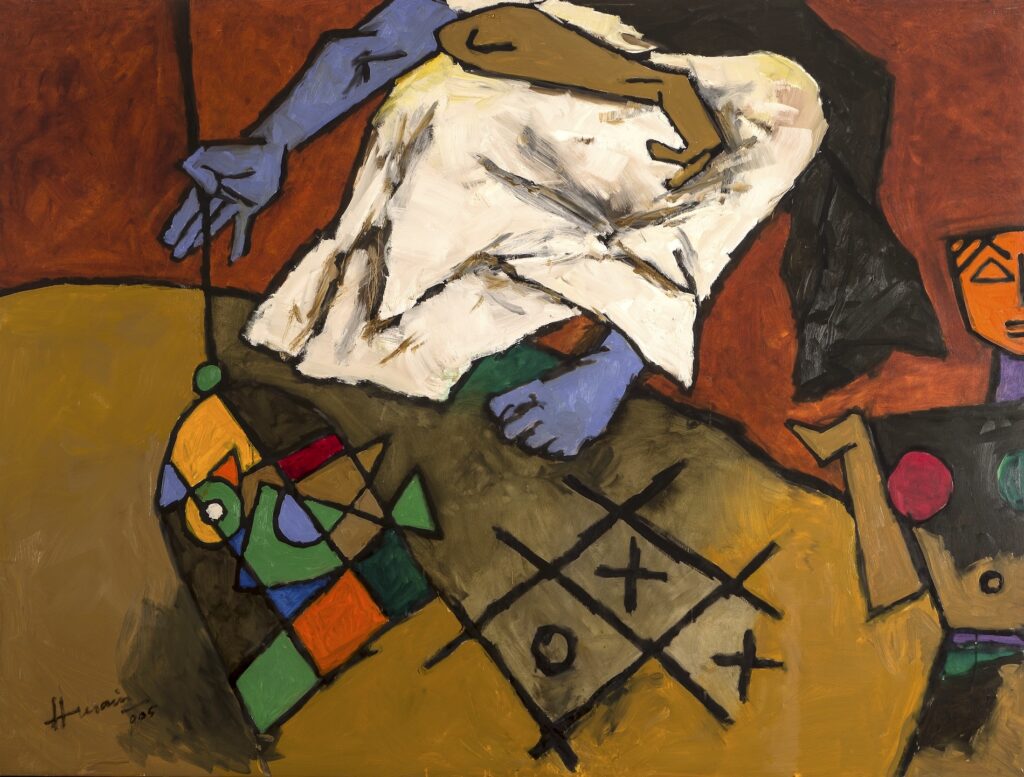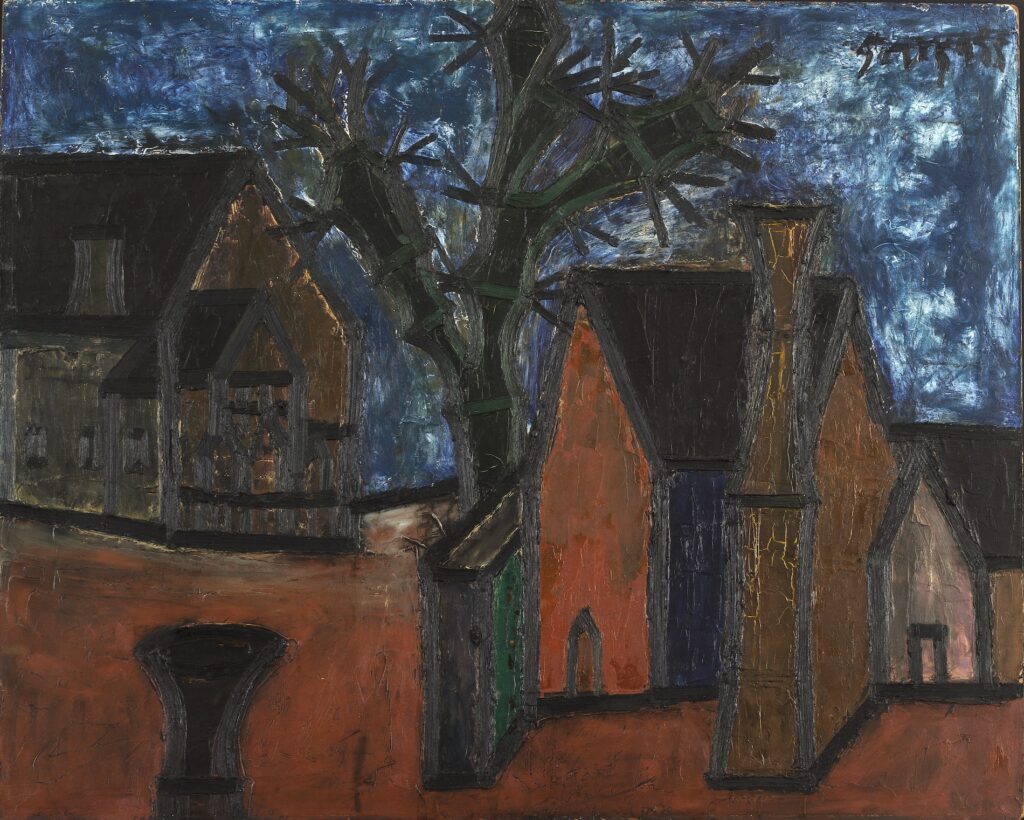
One of India’s greatest modernists, Francis Newton Souza catapulted to fame in post-war London in the 1950s. The present lot, painted in 1955, belongs to this iconic period of the artist’s career expressing his feelings and anxieties of the postwar era and reflecting on his own personal anguish.
The subject matter of La Place Town Square, is rather traditional compared to Souza’s other works, it is a typical French town with rustic buildings and a well depicted in an earthy palette. With hints of cubism and thick dark outlines, the hallmark of his work in this period, the houses appeared boxy while the well in the forefront gives the picture a sense of depth. The barren tree with spines for leaves depicted alongside uninviting windowless houses creates an atmosphere that is desolate, cold and unwelcoming reflecting perhaps the initial reaction to his works when he arrived in London a few years before. Looming above the townscape is Souza’s signature rendering of the sky, brooding and stormy conveying a sense of gloom.
“The graphic power of Souza’s lines produces simplified and bold images, while the thick oil paints applied liberally to the board or canvas, with swift strokes, give his work a sense of vitality and movement…Cityscapes, constructed from fragmented images and memories, are also important subjects and perhaps suggestive of Souza’s cosmopolitan life and frequent traveling.” (FN Souza: Icons of a Modern World, All Too Human, Tate London, 28 February – 27 August 2018, Exhibition Catalogue, p. 20)
Auction Catalogue – South Asian Art – ‘Modern and Contemporary – 13-17 June 2019
